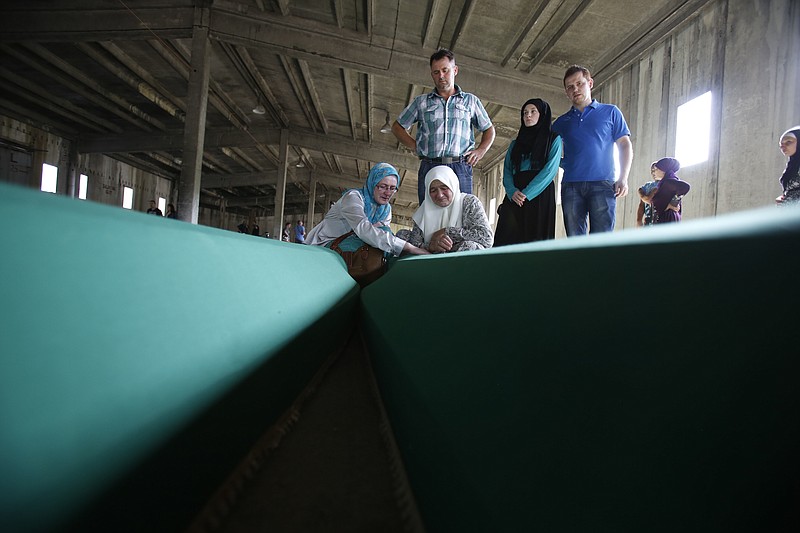SARAJEVO, Bosnia-Herzegovina (AP) - Thousands of Bosnians raised their hands in prayer Saturday as a truck bearing 127 coffins passed through the capital on its way to Srebrenica, where the newly identified victims of Europe's worst massacre since World War II will be buried on the 21th anniversary of the crime.
The truck stopped briefly in front of Bosnia's Presidency in Sarajevo, where residents, officials and foreign ambassadors paid tribute. Many in the crowd wept and tucked flowers into the truck's canvas tarp before it slowly drove down the street, covered in white rose petals.
The remains will be buried Monday next to over 6,000 other Srebrenica victims found previously in mass graves. The youngest victim to be buried this year was 14, the oldest 77.
International courts have defined the Serb massacre of over 8,000 Muslim Bosnians at the end of Bosnia's 1992-95 war as genocide.
Every year forensic experts find new bodies in the nearly 100 mass graves so far found. The remains are identified through DNA analysis before they are buried again at a memorial center near Srebrenica, where the victims were last seen alive.
The eastern Bosnian town was besieged by Serb forces for years before it fell on July 11, 1995. Its Muslim population fled the town which was two years before that declared a U.N. "safe haven" for civilians. They rushed to the U.N. compound in hopes that the peacekeepers would protect them. But when Serb forces led by Serb general Ratko Mladic arrived at the U.N. compound, they separated out men and boys for execution and sent the women and girls to Bosnian government-held territory as the outnumbered, outgunned peacekeepers watched helplessly.
Thousands of male residents of Srebrenica tried to flee through the woods but were hunted down and killed by the Serbs. Mladic is now on trial before the U.N. war crimes tribunal in the Hague.
U.S. Secretary of State John Kerry said the American people stand with the people of Bosnia and Herzegovina as the Srebrenica massacre is commemorated.
"The memory of what happened in Srebrenica should strengthen our resolve to settle differences peacefully and with respect for the fundamental dignity of every person, regardless of nationality, race, gender, or creed," he said in a statement Saturday.
Every year Fatima Hubijer, 63, attends the Serbrenica funerals thinking that one day her son will be found too, and one of the graves at the memorial center will be his.
"If I only would find him and bury him ... then I would at least have a pile of dirt to caress," she said.
Tens of thousands are expected to attend Monday's ceremony.
